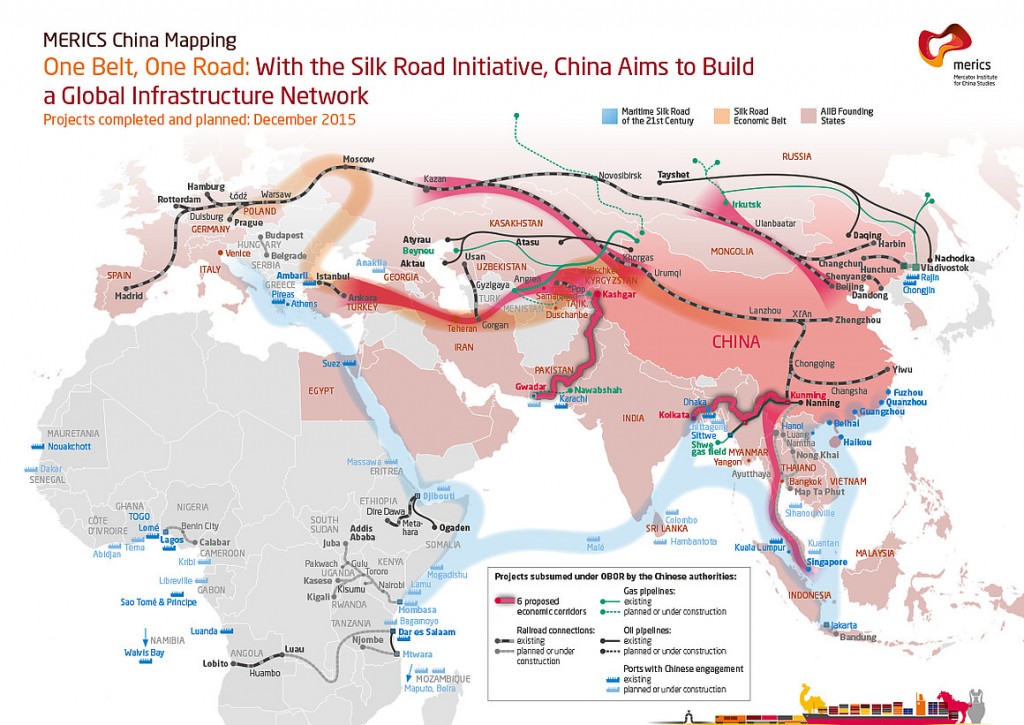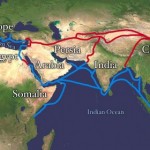Read Anoop Singh’s previous review of BRI, ‘OBOR: in search of private financing’
Turkey hosted a major conference on the Belt and Road Initiative (BRI) in the last week of April in Istanbul. The main hosts were: Koç University Maritime Forum (KUDENFOR), Koç University Asia Centre (KUASIA), and the Foreign Economic Relations Board (DEİK) of Turkey. Huaqiao University, China, was the main sponsor, supported by the Chinese Embassy. Other participants came from the academic and business community in Turkey, and representatives from the EU and other countries. I represented Gateway House.
The meeting was well timed–ahead of the Heads of State BRI Summit in Beijing in mid-May, when countries and international financial institutions (IFIs) are expected to sign up formally on the project. Turkish president Erdogan will attend it. India has not yet indicated sending any representation to the summit—and is unlikely to do so.
The BRI has become China’s most ambitious foreign trade and investment project [1] in its 13th Five-Year Plan, potentially similar in size to the Trans-Pacific Partnership Agreement, previously proposed by the U.S. China’s 2017 Government Work Report identified the BRI as an anchor for expansion and enhancement of the “opening up” policy, with international capacity cooperation as a key component.
Turkey clearly sees the BRI as building its role as the land and sea transportation hub to Europe from Asia. Consequently, there was strong support at the conference for the BRI from Turkey, especially given slow global growth, weak trade and investment, and the risks of a more protectionist global economic environment. Many of the Turkish scholars saw its potential to revive trade and investment for their own businesses while unlocking development in countries along the Silk routes. Given Turkey’s own changing attitude about the European Union, many Turkish experts believed that the BRI positions them advantageously.
The initiative is also seen as a key test for China’s ambitions to become a major player in global economic policy design and governance. But while signaling BRI’s potential to develop new global value chains by supporting investment and business opportunities in the regions covered by the Silk Road, there are several issues related to its financing and governance.
With total cost said to be at least $1 trillion, the potential funding channels are critical. It helps that China-led official and multilateral financing channels are significant and are taking shape. However, put together, these financing channels could be small, relative to the funding needs of the BRI.
Thus, the challenge will be to leverage available official financing and attract the private. There is certainly potential to draw in financing from international pension funds, insurance companies, sovereign wealth funds, and private equity funds—especially for the cross-border investments that comprise the Initiative. This will provide market confidence and liquidity on a sustainable basis.
However, to get private financing into such cross-border infrastructure will require “bankable” projects, with reliable market rates of return, international standards, and transparency. Here it helps that the Hong Kong Monetary Authority (HKMA) has launched an Infrastructure Financing Facilitation Office (IFFO) to develop Hong Kong as a fundraising centre for BRI projects as it has been a hub for China’s inbound and outbound investments.
China also has the option of establishing a strategic investment fund that can attract private finance into the Silk Road infrastructure projects, through public capital multipliers.
There are recent examples of such options:
- the Asian Development Bank (ADB) has established the Leading Asia Private Sector Infrastructure Fund (LEAP).
- the European Fund for Strategic Investments (EFSI) that supports the European Investment Plan. This regional Strategic Investment Fund was established in 2015 by the European Commission (EC), and the European Investment Bank (EIB) which manages it. It aims to attract private investors in the financing of European investment through a wide range of financial instruments, including debt instruments, guarantees, equity, quasi-equity instruments, credit enhancement tools or venture capital.
In building such options, I offered a word of caution on the need to set up a multilateral governance framework involving all the potential countries on the routes. It helps that China is developing bilateral agreements with the countries potentially involved, but a multilateral framework would better cover the many cross-border issues of interest to all those potentially involved.
Such a multilateral framework would likely need a secretariat with all the countries somehow involved in it.
Anoop Singh is Distinguished Fellow, Geoeconomics Studies at Gateway House: Indian Council on Global Relations.
This article was exclusively written for Gateway House: Indian Council on Global Relations. You can read more exclusive content here.
For interview requests with the author, or for permission to republish, please contact outreach@gatewayhouse.in.
© Copyright 2017 Gateway House: Indian Council on Global Relations. All rights reserved. Any unauthorized copying or reproduction is strictly prohibited
References
[1] The BRI aims to build a vast network of road and maritime transportation and other infrastructure across 65 countries in Asia, Africa, the Middle East, and Europe, spanning 60% of the world’s population, and 40% of global GDP.
The vision is to build a new Eurasian land bridge by developing five major economic corridors (China-Mongolia-Russia; China-Central Asia-West Asia; the China-Indochina Peninsula; China-Pakistan; and Bangladesh-China-India-Myanmar) and maritime transport routes by connecting major sea ports. Africa is also vital to the strategy, with countries from South Africa, Egypt, Kenya, Tanzania to Mozambique, and Ethiopia, seeking involvement.

The initiative aims at generating connectivity through new trade, business, finance, and technology, and building new global value chains. Potentially, the Initiative could also have much impact on China’s domestic economy, helping address construction-related excess capacity.


